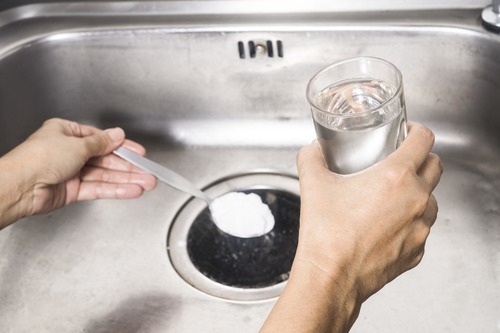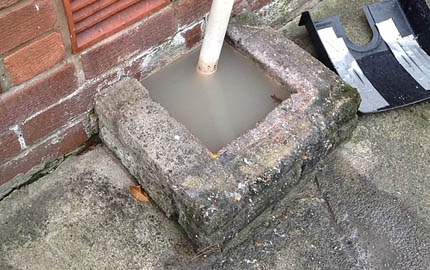Steps to Take for Repairing a Blocked Drain Prior to Calling Experts
Steps to Take for Repairing a Blocked Drain Prior to Calling Experts
Blog Article
We've encountered the article relating to Tips for Dealing with Clogged Drains and Sewer Lines listed below on the net and felt it made perfect sense to write about it with you on this page.

Introduction
Taking care of a blocked drain can be an irritating experience, interrupting day-to-day activities and potentially triggering damages to your home. Nevertheless, before reaching out to plumbing professionals, there are actions you can take to deal with the problem yourself. In this guide, we'll check out DIY remedies and preventive measures to take on a blocked drainpipe successfully.
Recognizing the Concern
The initial step in resolving a blocked drainpipe is recognizing the signs. Slow-moving water drainage, gurgling audios, foul odors emanating from drains pipes, or water backing up are common indications of a blocked drain. Identifying these indications early can assist protect against even more complications.
Typical Causes of Obstructed Drains
Comprehending the aspects that add to drain pipes blockages is essential for effective resolution. Usual culprits consist of hair, soap scum, grease, food particles, and international items like sanitary products or paper towels. Tree roots attacking underground pipelines can additionally cause considerable clogs.
Do it yourself Solutions
For minor blockages, a number of DIY options can be effective. Putting boiling thin down the drain can help liquify oil and particles. Sodium bicarbonate and vinegar or a mix of salt and baking soda can act as all-natural cleansers. Utilizing a bettor or plumbing serpent to dislodge obstructions is another choice.
Tools and Tools
Having the right tools available can make DIY drainpipe cleansing more reliable. A plunger is a flexible device for getting rid of obstructions in sinks, bathrooms, and showers. A pipes snake or auger can get to much deeper obstructions, while drainpipe cleaning chemicals can be used very carefully for persistent blockages.
Safety nets
To avoid future obstructions, adopting preventive measures is essential. Mount drainpipe guards or filters to capture hair and particles prior to they go into the pipelines. Frequently flush drains with warm water to dissolve grease build-up, and avoid disposing of oil or solid waste down the tubes.
When to Call a Professional
While DIY services can solve small obstructions, particular indications indicate the requirement for professional aid. Consistent clogs, foul odors in spite of cleansing efforts, or several drains pipes backing up at the same time are warnings that call for experienced treatment.
Selecting the Right Pipes Solution
When selecting a plumbing service, take into consideration factors such as experience, licensing, and client testimonials. Choose a reputable plumber with a track record of top quality handiwork and transparent prices methods.
Expense Factors to consider
The cost of specialist drain cleaning services can vary relying on the severity of the blockage and the plumber's prices. Request quotes from multiple service providers and inquire about any surcharges to guarantee openness and avoid shocks.
Safety Measures
When attempting DIY drain cleaning, prioritize safety and security. Put on safety handwear covers and eyewear to avoid contact with hazardous chemicals or microorganisms. Never ever blend various drainpipe cleaning products, as this can generate hazardous fumes.
Situation Studies
Real-life examples illustrate the effectiveness of DIY remedies and the importance of prompt expert treatment in resolving drainpipe blockages.
Verdict
By complying with the pointers outlined in this overview, you can efficiently take on obstructed drains and avoid future plumbing issues. Whether selecting DIY options or seeking expert help, punctual action is crucial to preserving a healthy pipes system and preserving the stability of your home.
How to Clear a Clogged Drain Yourself (And When to Call In the Professionals)
What Can Clog a Drain
Dirt Skin flakes Hair Grease Soap scum Food Offset pipes Tree roots Small objects Mineral buildup DIY Tricks to Unclog a Drain
You can fix this! Once you have identified the source of the clog (or have a vague idea), you can try one or a combination of these fixes in order to clear your plumbing.
Wire Hanger or Snake
Untangle and clear out hair from a drainpipe with a homemade snake. Use a straightened-out wire hanger with a 90-degree angle hook to locate the clog and drag out any unwanted material.
Remember not to push the clog further down to where the wire hanger cannot reach! If you need to follow up with a plunger, give it a try. Your efforts might be more successful after it’s been wire-snaked.
If you want to get fancy and don’t have a wire hanger to spare, head to the store and pick up a hand-operated drain snake. You can get one for $10-$30. It may save you the hassle, and provide additional length to reach deep into the clogged pipe.
Plunger
A cup plunger has a suction cup attached to a wooden handle. The rubber creates a seal around the drain, and increases the pressure force of the plunger.
Plunge for 30-second increments to loosen the clog. This may need to be repeated over the course of 15-20 minutes. Once plunged, run the water to flush the remaining material out of the drain.
Remember– never use a plunger if you have used a chemical drain cleaner. These chemicals can splash up from the force of the plunger and cause serious injury or burns.
Boiling Water
Hot water can sometimes break up materials into a flushable amount. Dirt, grease, and soap buildup requires heat in order to unstick from surfaces.
Take your kitchen kettle and heat your water to a boil. Once it reaches a rolling boil, pour it directly down the drain into the blockage. Carefully follow with plunging, if necessary.
Don’t worry if this takes more than one try! It can often take multiple kettles and repeated plunging in order to clear a particularly stubborn clog.
Chemical Drain Cleaner
As a last resort, pick up a bottle of chemical drain cleaner. Drain-cleaning chemicals are potent, and not very good for the environment.
You may need to wear protective eyewear in gloves before handling your bottle of chemical drain cleaner. Follow the instructions printed on the bottle, and flush with water as soon as the instructions allow. Do not follow with plunging.
Baking Soda and Vinegar
As a safer alternative to chemical drain cleaner, baking soda and vinegar can create a chemical reaction that clears tough clogs.
Combine one cup of cleaning vinegar with one cup of boiling water, and set aside. Once you have done this, pour half a cup of baking soda down the drain. Give the baking thirty seconds to settle and cover a large portion of the problem drain.
Following the baking soda, pour down your vinegar and hot water solution. Once the vinegar and baking soda combine, the mixture will bubble and fix. Let this reaction fizzle in the drain for about an hour.
After an hour, follow with a kettle’s worth of hot water. The heat and liquid should flush out any remaining material.
When to Call a Plumber
If your DIY attempts haven’t cleared your clog drain, it’s time to call in a professional. It’s not worth losing access to your kitchen sink or high-traffic bathroom. A clog in a vital area can keep you from the things you’d rather be doing, and derail your routine.
Anytime a clog is causing water to spread is a time to call in a plumbing service. What starts out as a little bit of water can quickly grow into serious, expensive water damage.
Additionally, a serious clog can result in burst pipes or serious leaks. Make sure you know when to take it seriously!
https://myguysnow.com/how-to-clear-a-clogged-drain-yourself-and-when-to-call-in-the-professionals/

I came across that blog entry on while doing research the web. Liked our posting? Please share it. Help another person locate it. Bless you for your time. Come back soon.
Request Service Report this page